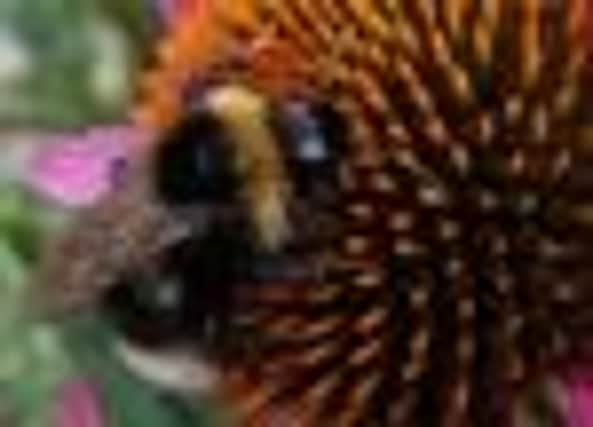Mixture of pesticides hastens last flight of the bumblebee


Research that aimed to mimic conditions in the countryside, where bees come into contact with numerous different chemicals while searching for food, found the combined effects of the pesticides significantly reduced the success of colonies.
Researchers from Royal Holloway, University of London, exposed a common species of bumblebee (Bombus terrestris) to two types of pesticides, apyrethroid and a neonicotinoid, over four weeks at levels they would encounter in the fields.
Advertisement
Hide AdAdvertisement
Hide AdUsing radio tagging to record the behaviour of bees from 40 colonies, which were allowed to forage outside, the researchers found that workers from colonies exposed to the neonicotinoid pesticide were less efficient at foraging, particularly collecting pollen.
They were 55 per cent more likely to get lost and not return to the nest than those in colonies not exposed to either pesticide, the study published in the journal Nature found.
Even though more bees were spending more time foraging, there was less pollen and they spent less time looking after their young, which combined to lead to fewer worker bees were being produced.
In colonies exposed to the pyrethroid, four times as many bees were found dead in the nest as in the groups that did not come into contact with either chemical.
Many of those were young bees which had only emerged a few days earlier.
Where the bees were exposed to both the pesticides, they suffered from both higher death rates among the worker bees and less successful foraging,reducing the success of the colony and even making it more likely to fail altogether.
Two of the ten coloniesexposed to both pesticides died off early in the four-weekexperiment.
The use of neonicotinoids has been restricted in some countries over concerns they are linked to declines in honeybees, but the UK government has said that so far, evidence does not show permitted uses of neonicotinoids has serious implications for the health of bee populations.
Advertisement
Hide AdAdvertisement
Hide AdWhile previous studies have focused on the possible effects of pesticides on honeybees, it was crucial to understand how they could affect other bee species, the researchers said.
Dr Nigel Raine said: “There is an urgent need to understand the reasons behind current bee declines as they are essential pollinators of many agricultural crops and wild flowers.”
He said pesticide usage was currently approved on tests which examined single pesticides.
“However, our evidence shows that the risk of exposure to multiple pesticides needs to be considered, as this can seriously affect colony success.”
Prof David Goulson, of the University of Stirling, said: “This new work adds another substantial boulder to the rapidly growing mound of evidence which now points to a significant and worrying impact of these chemicals on our wild bumblebees.
“This new study also highlights the threat posed by exposing beneficial insects to mixtures of toxic chemicals, something which all bees face in agricultural environments, but the effects of which are rather poorly understood.”